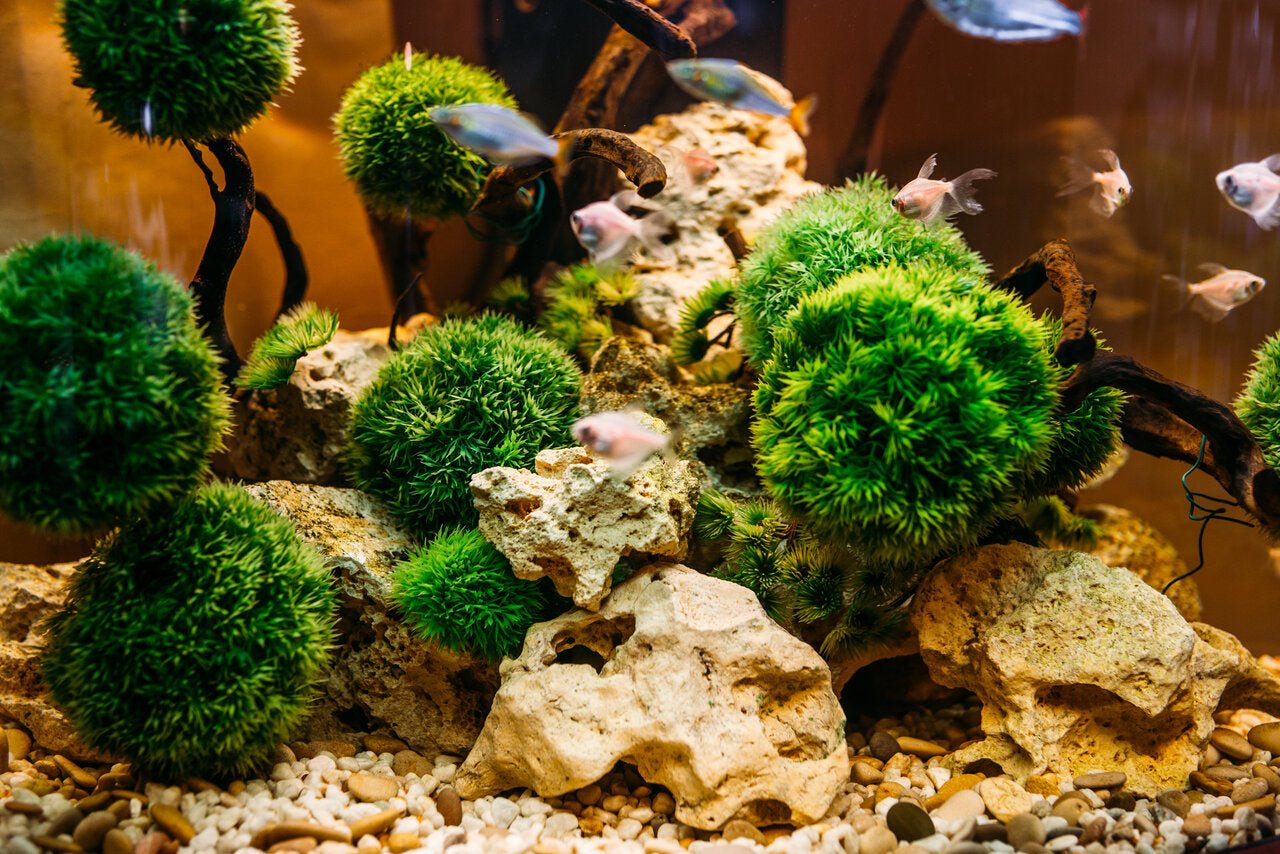Ever marvelled at those stunningly beautiful aquarium landscapes that make you feel like you've been miniaturised and teleported into an aquatic universe? Well, those masterpieces are more than just eye candy; they are the result of a fascinating blend of art and science known as aquascaping. It's where botany, design principles, water chemistry, and even a dash of zoology converge to create underwater panoramas that are as breathtaking as they are soothing.
Whether you're a seasoned aquarist or a newbie looking to dip your toes in the water, this guide has got you covered. From selecting the right plants and fish, to mastering the art of layout and maintenance, we'll dive into all the essentials. So, ready to embark on an exciting journey of transforming your ordinary aquarium into a thriving, vibrant ecosystem?
Exploring Popular Aquascaping Styles
To begin your aquascaping journey, it is helpful to familiarise yourself with popular aquascaping styles that cater to different tastes, preferences, and skill levels. Here are three well-established styles that can inspire your creative vision:
- Nature Aquarium Style: Popularised by renowned aquascaper Takashi Amano, the Nature Aquarium style aims to recreate the serenity and beauty of natural landscapes within the aquarium setting. This style typically features dense plant growth, a strategic arrangement of rocks and driftwood, and a sense of harmony and balance. Key components, such as the golden ratio, feature prominently in the layout, creating a strong visual impact that draws the viewer into the underwater world.
- Dutch Aquascaping Style: Originating in the Netherlands, the Dutch-style focuses predominantly on lush aquatic plant arrangements, with little to no hardscape elements such as rocks or driftwood. The vibrant colours and textures of the aquatic plants take centre stage, often arranged in terraces or rows that create an eye-catching and multi-dimensional composition.
- Iwagumi Style: Inspired by Japanese rock gardens, the Iwagumi style is characterised by minimalist rock arrangements that mimic natural landscapes. Typically, an odd number of rocks serve as a focal point, with one main rock complemented by smaller supporting stones. A limited palette of low-growing plants and carpeting flora accentuates the hardscape, creating a clean, uncluttered, and tranquil atmosphere.
Choosing the Right Foundation: Substrate and Hardscape Materials
The key to designing a cohesive aquascape lies in the careful selection of substrate and hardscape materials. These foundational elements can set the tone for your underwater landscape:
- Substrate: The substrate is an essential element in aquascaping, as it provides a home for beneficial bacteria and supports your aquarium plants. Selecting the right substrate, such as nutrient-rich aquasoil or attractive natural gravel, can greatly influence the success of your planted aquarium.
- Rocks: Rocks can serve as focal points or anchor points for your aquascape, creating visual interest and adding a sense of depth and perspective. It is essential to choose aquarium-safe rocks that do not affect water chemistry. Popular choices include Seiryu stone, Dragon stone, and lava rock.
- Driftwood: Driftwood adds a natural and organic touch to your aquarium, complementing the surrounding plant life and offering additional surfaces for plant attachment. Some popular driftwood options include Spiderwood, Malaysian driftwood, and Manzanita branches.
Selecting the Right Aquatic Plants for Your Aquascape
With a solid foundation, you can now focus on arranging the flora of your underwater landscape, with careful consideration for functionality, aesthetics, and ease of maintenance:
- Foreground Plants: These low-growing plants create a carpet-like texture in the front area of the aquarium, providing a sense of depth and visual continuity. Popular choices include Dwarf Baby Tears (Hemianthus callitrichoides), Dwarf Hairgrass (Eleocharis acicularis), and Marsilea hirsuta.
- Midground Plants: Midground plants are slightly taller and often serve to connect foreground and background compositions. Some suitable options include Cryptocoryne species, Anubias nana, and Bucephalandra varieties.
- Background Plants: Tall, fast-growing plants placed towards the rear of the aquarium help add height, visual interest, and depth to your aquascape. Examples include Vallisneria species, Rotala rotundifolia, and Limnophila aquatica.
Effective Aquascaping Techniques and Maintenance Tips
With your aquascape in place, it is essential to establish and practice effective maintenance techniques to ensure the long-term success of your underwater sanctuary:
- Lighting: Proper lighting is crucial for plant growth and overall aesthetics. Ensure that your aquarium lighting suits the needs of your chosen plants, as some species may require high-output lighting, while others may thrive in low-light conditions.
- Water Chemistry: Maintaining optimal water parameters, such as pH, temperature, and hardness, is essential for plant growth and fish health. Check and adjust these parameters regularly to keep your aquatic environment in peak condition.
- Pruning: Regular pruning of your aquatic plants will help maintain the desired shape and prevent overgrowth, which may overshadow your hardscape elements or negatively impact water quality.
Making Your Aquascaping Vision a Reality
Overall, aquascaping is a fascinating blend of art and science that has the power to transform a simple aquarium into a mesmerizing underwater landscape. It's a rewarding hobby that encourages continuous learning and offers a tangible way to connect with nature.
As one of the UK's largest aquatics specialists, Perfect Aquatics is here to support you every step of the way with expert advice, high-quality supplies, and the passion needed to help you succeed in your aquascaping endeavours.
Visit Perfect Aquatics today to browse our extensive range of aquascaping essentials and take the first steps towards creating the underwater masterpiece of your dreams.

